The educational materials listed on this page are about High Tunnels or Hoop Houses.
A high tunnel or hoop house is a covered structure used to achieve season extension, or commercial fruit and vegetable production outside the usual growing season. Common vegetables to grow in high tunnels include tomatoes, peppers, leafy greens and lettuces, strawberries and brambles. Getting started with commercial hoop house farming requires a fairly modest investment in a structure, along with knowledge of high tunnel vegetable production, such as management of nutrients, pests, irrigation and temperature. Visit SARE’s High Tunnels and Other Season Extension Techniques topic room for detailed information on hoop house plans and hoop house construction, as well as other management topics. You can also find information about sustainable commercial greenhouse production in the High Tunnels and Other Season Extension Techniques topic room.
If you are interested in season extension through high tunnel farming or gardening, the resources on this page can help. Dig deeper for information on how to build a high tunnel or hoop house, how to manage vegetable and fruit production in one, and ideas for marketing.
Showing 1-10 of 22 results
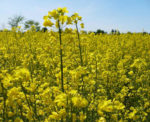
Sustainable Production and Use of On-Farm Energy
Using solar or wind energy or producing biofuels from crop feedstocks and anaerobic digestion helps farmers achieve energy independence while improving profitability and reducing fossil fuel emissions.
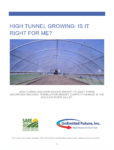
High Tunnel Growing: Is it Right for Me?
A report to assist farms incorporating high tunnels for market competitiveness, with research from West Virginia's Mid-Ohio River Valley.
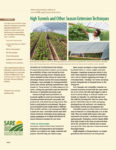
High Tunnels and Other Season Extension Techniques
From low covers to high tunnels, from hoop houses to greenhouses—producers are finding ever more innovative ways to extend the growing season, and their income stream.
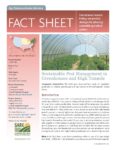
Sustainable Pest Management in Greenhouses and High Tunnels
From 2007 to 2009, Cornell researchers in New York used a SARE grant to study the efficacy of biological insect control in minimally heated greenhouses and high tunnels or hoop houses. This fact sheet reports the results and provides detailed advice on how growers can use natural enemies to manage insect pests in minimally heated greenhouses and unheated high tunnels.

Winter Storage Options for the Northeast
To help farmers in the Philadelphia area learn about various winter storage options, the nonprofit Fair Food conducted site visits of well-established winter storage operations in Pennsylvania, Vermont and Quebec.
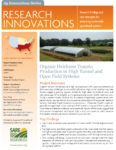
Organic Heirloom Tomato Production in High Tunnel and Open Field Systems
A replicated, systems-level comparison study was carried out to evaluate the production of the popular heirloom tomato, Cherokee Purple, under organically managed high tunnel and open field systems.
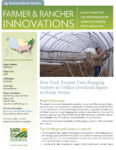
New York Farmer Uses Hanging Gutters to Utilize Overhead Space in Hoop House
This project looked at increasing the productivity and cost effectiveness of growing more crops in a hoop house by utilizing the overhead space through innovative design.
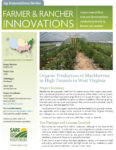
Organic Production of Blackberries in High Tunnels in West Virginia
The objective of this season extension project was to evaluate the feasibility of growing blackberries organically within a commercial high tunnel or hoop house in central West Virginia, including pest management, cultivar and management considerations.
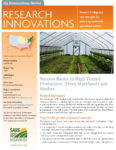
Success Basics in High Tunnel Production: Three Maryland Case Studies
This three-year study involved five innovative farmers in building high tunnels to investigate best practices in high-tunnel construction, tomato production and factors influencing profitability.
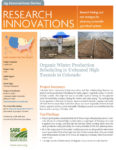
Organic Winter Production Scheduling in Unheated High Tunnels in Colorado
Colorado State University researchers and five farmers explored winter production scheduling for optimal yields of hardy organic vegetable crops in unheated high tunnels.